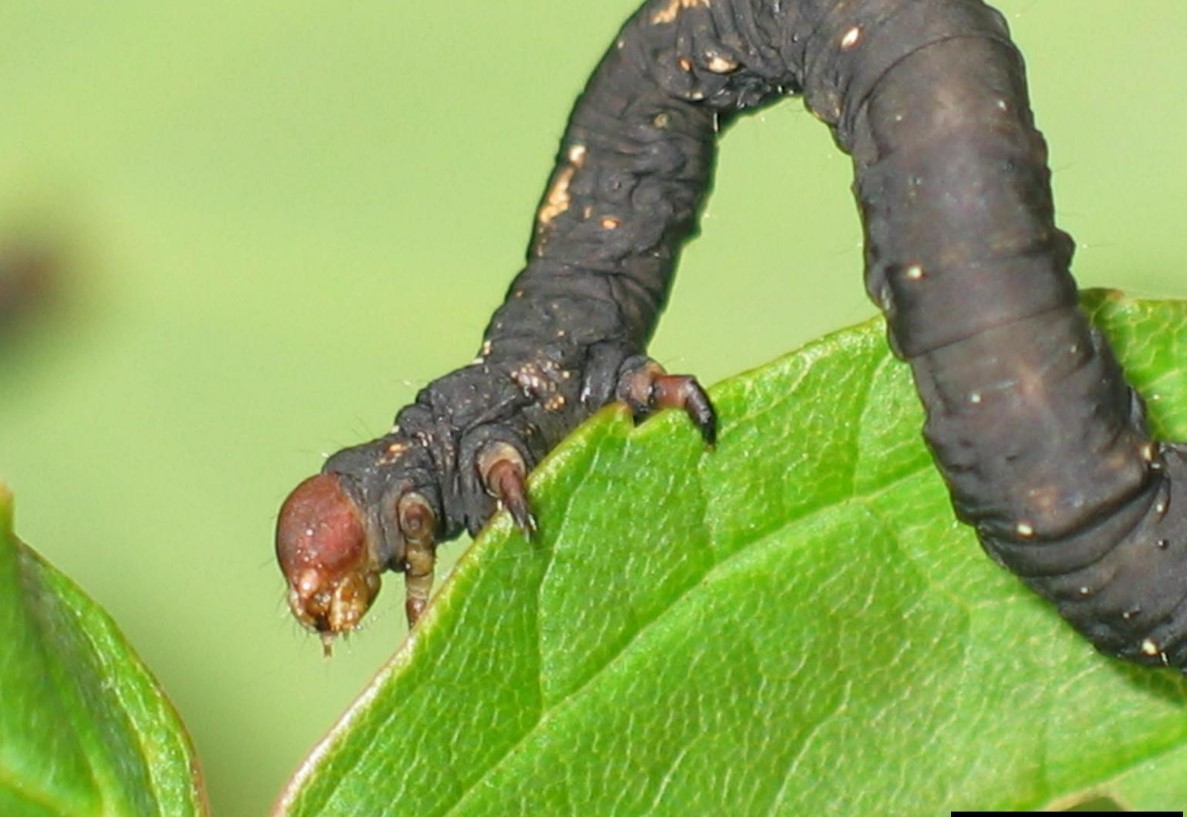The elm spanworm is a serious defoliator of shade and forest trees in the eastern Canada and the United States. Generally, this native pest feeds on elm, hickory, oak, red and sugar maple, American beech, and ash. During July females lay eggs in irregular, single-layered, compact masses on the underside of twigs, large branches, or on tree trunks. Each female lays an average of 250 eggs. The eggs are oblong-elliptical, with a white serrated ring around the end. Elm span-worm spends winter in the egg stage.
Egg hatch may begin in mid-to-late May. After hatching, the larval stage passes through five or six instars, and then it pupates. To prepare for pupation, mature larvae spin coarse, netlike cocoons of silken threads, often on partially defoliated leaves. In severely defoliated stands, cocoons may be spun on exposed branch tips, in bark crevices, or stumps in the undergrowth. The pupal period varies from 9 to 17 days. Adults emerge in late June through July. They are on the wing at night.
If an infestation is close to an urban area, male moths may fly to lights in large numbers frequently described as resembling a snowstorm in the summer.
Sign and Symptoms
All damage is caused by the larval stage of the elm spanworm. As soon as egg hatch occurs, larvae begin to feed on the underside of leaves, causing a shot-hole effect. As larvae mature, they eat all leaf material between the major veins. Larvae are capable of completely defoliating shade trees and large areas of mixed hardwood forest during outbreaks.
Prevention
Watering & Fertilizing
- Your trees can be kept healthy by watering and fertilizing. Click here to learn more about watering.
Minor Pruning
- Where possible, prune small twigs that are infested with masses of eggs.
Control - What you need an arborist to do
Pesticide
- Bacillus thuringiensis var. kurstaki (Btk) can also be used to control Elm Spanworm. Btk is a selective biological insecticide which controls lepidopterous larvae (caterpillars).



Tree Health Issues
Wondering about costs?

